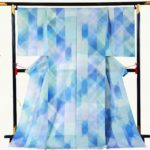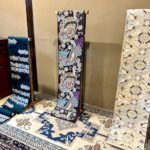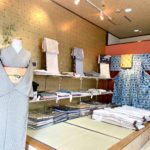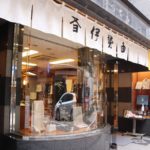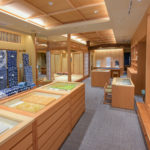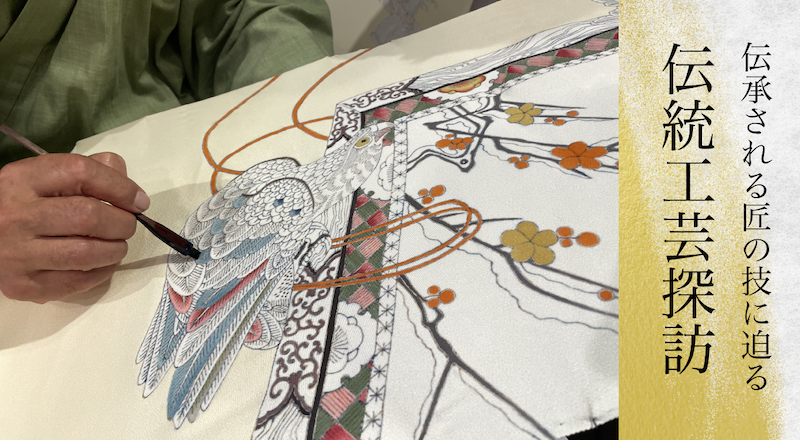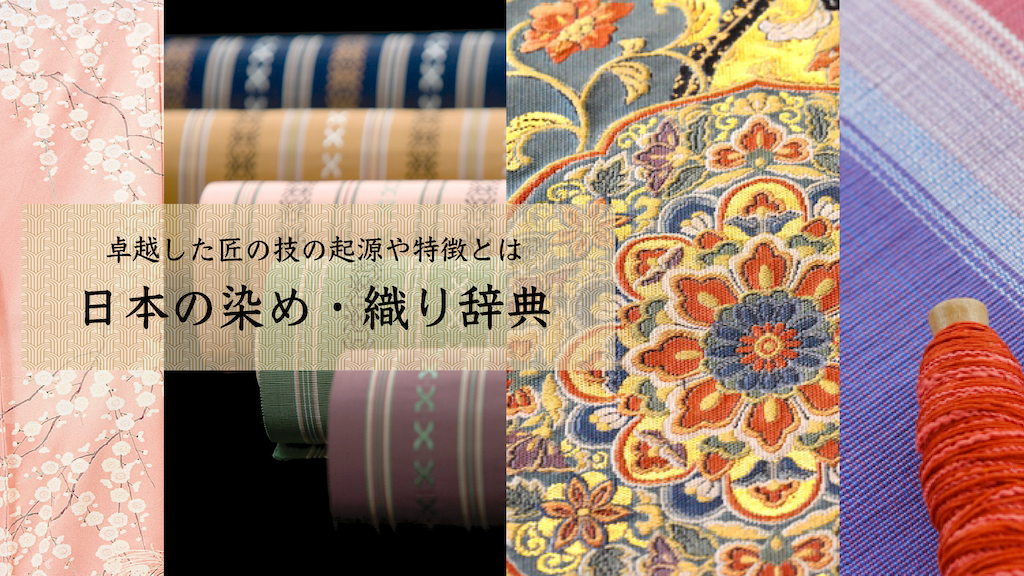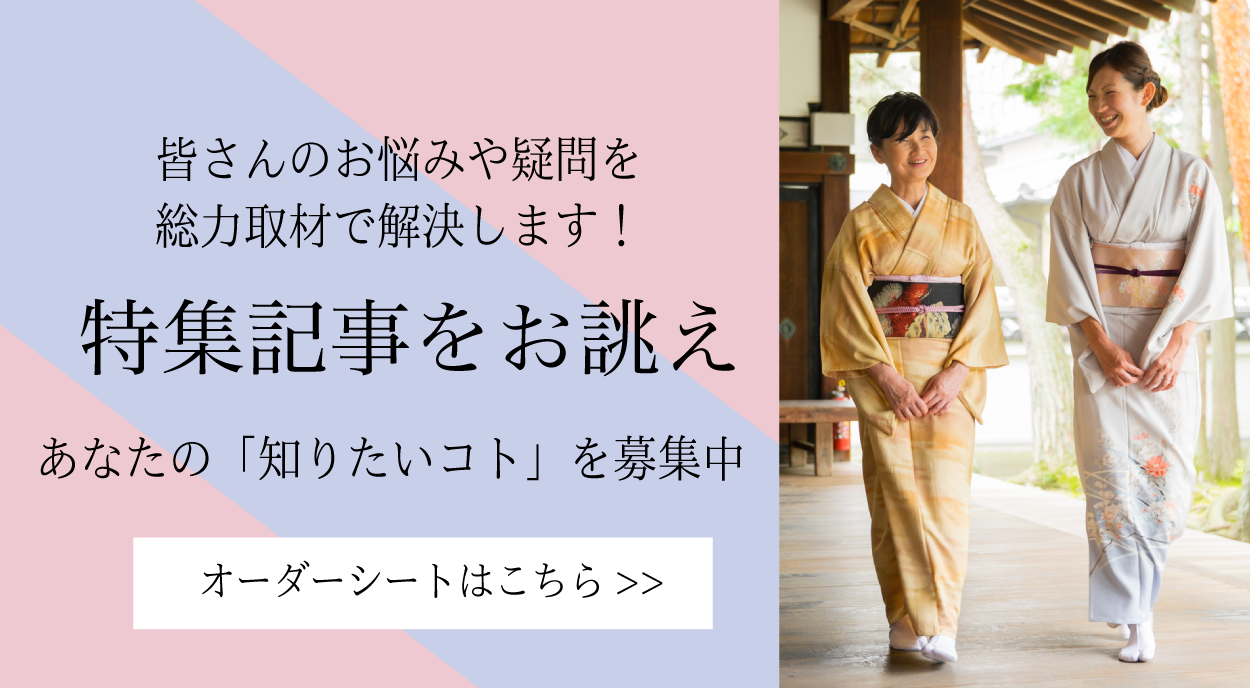作州絣
Pronunciation: Sakushu-kasuri
Production area: Tsuyama City, Okayama Prefecture
Sakushu-kasuri is a traditional cotton Kasuri textile handed down in the castle town of Tsuyama. Woven with thick cotton threads, it is a simple and durable fabric that became widely used among the common people. Its hallmark is the straightforward contrast of indigo and white patterns. The Mimasaka (Sakushu) region, including Tsuyama, had long been known for high-quality silk weaving. In the early 17th century, cotton cultivation began, and both silk and cotton textiles were produced side by side. Cotton was hand-spun into yarn, dyed by local dyers, and woven into indigo plain cloth or striped patterns for everyday wear. In the Meiji era, influenced by the techniques of Kurayoshi-kasuri from Tottori, pictorial kasuri weaving began and spread throughout the region. After World War II, weaving was revived in 1951 and given the name “Sakushu-kasuri” for commercial distribution. At its peak around 1955, annual production reached as many as 50,000 bolts. However, production gradually declined. Today, the Sakushu-kasuri Preservation Society leads efforts to pass down the techniques and train successors to ensure the survival of this heritage craft.

